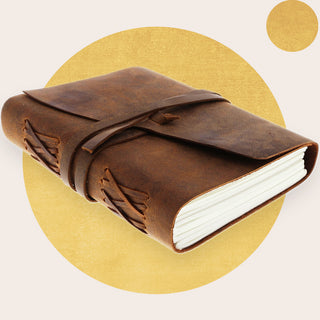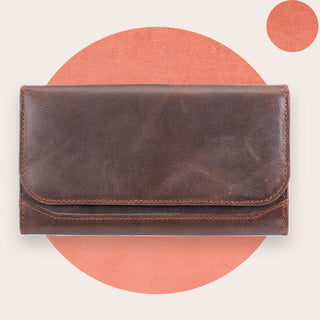Are you looking to tame your expenditures because they have got out of hand? Are you miffed as to where all your money goes each month and want an accurate and reliable way to get a handle on it?
Then step forth and learn more about yourself as we explore six easy adjustable steps to follow when starting your own budgeting journal.
Learning how to create your own budgeting journal is no more difficult than getting to know yourself and, in turn, your financial expenditure.
Step 1: Formatting
The best thing you can begin to do when starting your own budgeting journal - especially if you want this exercise to have an actual impact on your personal finance - is to properly format it. We must start as we mean to go on, after all, and there is no better way to embody this mantra in this instance than to lay the groundwork for an effective budgeting journal.
Much like any other journal, whether that be a gratitude journal or a manifestation journal, you must start out by ascertaining your actual intentions. It is all well and good to use a template for this kind of journal, but this template will be of no real use if you don't know what will be most helpful to you.
Some people, for example, prefer to track their outgoings on a monthly basis while others, on the other hand, prefer to do so weekly. This can be for any number of reasons - regardless of what they are, it would be useless to use a budgeting journal based on a timespan that runs antithetical to the way that you know you work best.
Step 2: Income
Another mantra to follow in this exercise is to know oneself. In this instance, you will want to have a firm grasp on your income before you can properly budget anything. No bill organizer can begin to work its magic without the user knowing their income, however broadly they interpret that.
This will no doubt be easier for those who have a fixed salaried income that they receive on a weekly or monthly basis. Those working on less fixed terms - whether they are self-employed, freelance, or otherwise - will find this more difficult and will likely have to put more work into tracking their finances in general if they hope to properly journal it.
Still, there is no use despairing if this is your predicament, especially since you can always work from an average income and adjust each month or week depending on the various changes that you might experience.

Step 3: Fixed Expenses
The next thing to work out is any fixed expenses you might be paying out each calendar week or month. This can include but is not limited to rent, utility bills (such as gas, electricity, Wi-Fi, water, etc.), phone bills, subscriptions (down to even the cheapest monthly magazine subscriptions), etc.
Once you have ascertained all of these in as much detail as possible, you can subtract this from your total income for each week or month and make a note of this. What's left is dubbed by many as expendable income - the money you have left to do what you like with, whether that be gambling, paying off debts, or simply investing financially or in things that you are interested in.
Step 4: Splitting Up/Setting Aside
What you do with the rest of the money is entirely up to you - you don't need any planners to tell you what to do with your cash. That being said, how you choose to spend it or save it will certainly depend on your individual circumstances. You might, for example, have various debts that need paying, in which case you should certainly think about paying them before buying anything extraneous to this.
Planning ahead can save you a hell of a lot of hassle in the long run. While you might not necessarily know how much food you are going to eat each month, attempting to ascertain an average amount and putting that amount aside means that even if you burn through all of your so-called expendable income, you will at least have some money left over for food.
Equally, it is helpful to have money set aside as expendable income as you really never know when something might appear impromptu that is altogether exciting and irresistible. Wouldn't it be nice to have enough money sitting in the bank that you could seize such opportunities when they rear their heads?
Step 5: Tracking
At this point, your commitment to the budgeting journal should be getting pretty serious - it takes a serious amount of knowledge to track your income and fixed expenses, so give yourself a pat on the back for making it this far. Here's where things get pretty serious, though.
If you want to take your budgeting journal to the next level, you are going to need to start properly keeping track of your expenses. If you can, keep receipts for most things - this shouldn't be difficult considering most purchases are now tracked and sent to you in monthly statements or can otherwise be accessed by using online banking.
Of course, this can take a bit of getting used to especially if you are not otherwise used to it. Sure enough, though, you will get into the habit of keeping the receipts, whether or not they are digital or physical. In this way, you can really begin to police yourself and see how much you are really spending.

Step 6: Totalling
Once you have begun to properly keep track of your expenditure in this way, you can actually begin to see your outgoings from an altogether holistic perspective, playing god, if you will.
More important than any of the steps above is to tailor them to your own spending habits. There will no doubt be parts of the regimen above that don't necessarily suit how you do things. Rather than despairing, simply make changes based on how you operate specifically, thereby evading any sort of terese exchange with the self, making savings all the while as you sign on the dotted line of the pages.
Many people who don't use a planner will have an overbearing sense of guilt weighing over them like a pregnant grey rain cloud. Contrary to popular belief, having a handle on your finances can actually help you to have more fun in the long run as you know what you are working with as opposed to bearing a great cloud of unknowing above your head. So, why not start today, making notes, encouraging saving, and keeping track of your expenditures like so?
Final Words
So, there you have it! Hopefully, you are now feeling ready and able to start your own budgeting journal by being as honest with yourself as possible!
FAQs Budgeting Journal
HOW DO YOU CREATE A BUDGET JOURNAL?
The most important thing when creating a budget journal is to know yourself well enough to tailor the experience to you. As well as knowing yourself, it is also as important to be as honest with yourself as you possibly can. You will get absolutely nothing out of the process of using a budgeting journal if you lie to yourself and fill it in with farcical figures. How, then, are you going to make accurate and real adjustments to your expenditures?



